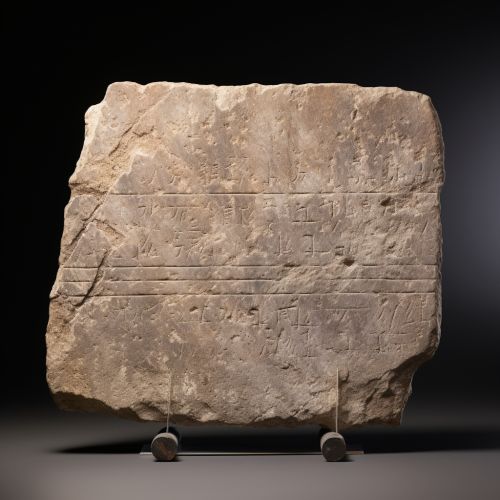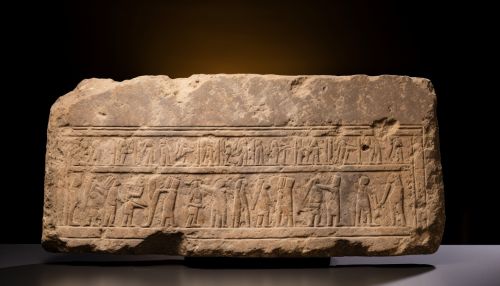Phoenician alphabet
Origins and Development
The Phoenician alphabet is an ancient writing system that originated in the Eastern Mediterranean region, specifically in the area known today as Lebanon. This script, which was developed around the 12th century BCE, was used by the Phoenician people, a seafaring civilization known for their extensive trade networks.


The Phoenician alphabet is a significant development in the history of writing as it is considered the progenitor of nearly all modern alphabets. It was a direct descendant of the Proto-Sinaitic script, which was in use by the Semitic workers in Egypt from 1850 BCE. The Phoenician alphabet evolved from this script, simplifying and standardizing the pictographic symbols into a set of 22 letters, all of which represented consonants.
Characteristics
The Phoenician alphabet is characterized by its simplicity and adaptability. Unlike the complex hieroglyphic and cuneiform scripts of their contemporaries, the Phoenician script was easy to learn and use, making it ideal for trade and administration. The script was written from right to left, a convention followed by many Semitic languages.
Each letter in the Phoenician alphabet represented a specific sound, making it a phonetic script. However, it was an abjad, meaning it only included consonants. Vowels were not explicitly written, and were instead inferred from the context by the reader.
Influence and Legacy
The Phoenician alphabet had a profound influence on the development of writing systems in the ancient world. As the Phoenicians established colonies and trade networks throughout the Mediterranean, they spread their alphabet to various cultures and regions.
The Greek alphabet is a direct descendant of the Phoenician script, adapted to include vowels. This adaptation marked a significant evolution in the history of writing, leading to the development of the first true alphabet. The Greek alphabet, in turn, influenced the development of the Latin alphabet, which is used in many languages today, including English.
The Phoenician script also influenced the development of the Aramaic alphabet, which was used to write several Semitic languages and was the script in which several sections of the Hebrew Bible were written. The Aramaic script, in turn, gave rise to the Hebrew alphabet and the Arabic script, both of which are still in use today.
Decipherment and Study
The Phoenician alphabet was deciphered in the 19th century, with the discovery of the Rosetta Stone playing a crucial role in understanding this ancient script. The stone, which features a decree issued in 196 BCE in three scripts – Greek, Egyptian hieroglyphs, and Egyptian demotic – provided scholars with the key to deciphering other ancient scripts, including Phoenician.
Today, the study of the Phoenician alphabet is a significant part of the field of epigraphy, the study of ancient inscriptions. It provides valuable insights into the history, culture, and language of the Phoenician civilization and its influence on the ancient world.
